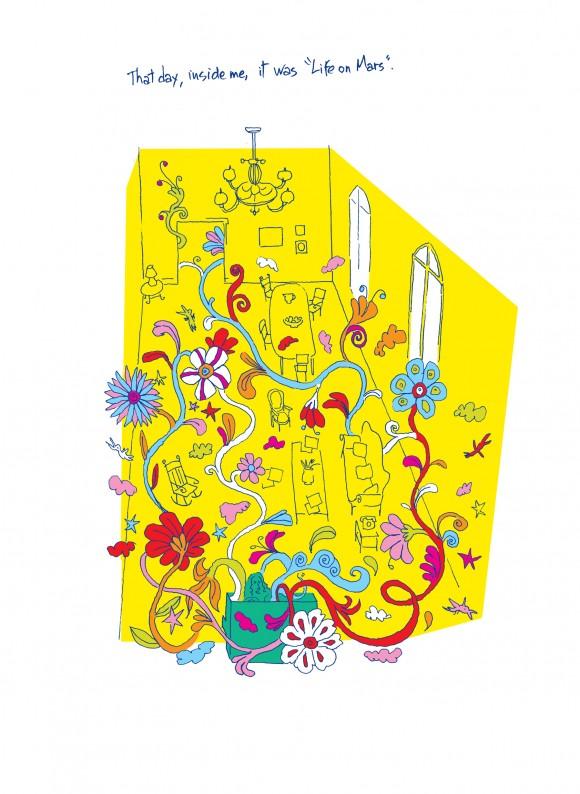“Haddon Hall, When David Invented Bowie”, is a charming semi-fictional account of the late rock legend’s formative years. It is a graphic novel, a book of evocative swirling cartoons, in which Tunisian-born artist Néjib draws inspiration from the graphic designers of the late 1960s and 1970s to tell his tale.
The novel explores Bowie’s time in Haddon Hall, a rambling south London Victorian house that has now been demolished. In the late 1960s Bowie moved in with his then girlfriend and future wife Angie.
The book explains how they adored the house’s “discreet decrepitude”, the property becoming the base for the creative experimentation that resulted in “The Man who Sold the World” album and later the ideas for the Ziggy character.
The novel is written from the perspective of the house whose eccentric charms nurtured the creative processes and bore witness to the comings and goings of a range of key collaborators and influences including Marc Bolan, Tony Visconti and Syd Barrett.
Epoch Times caught up with Paris-based Néjib, who explained some of the inspiration for the book that was originally published in French in 2012, and has just recently been translated and published in English.
The Beginnings
Néjib was a teenager when he first discovered Bowie. His brother bought the “Ziggy Stardust” album and from that day he became a fan. As he grew up he became more of an admirer than a fan. “I mean a fan has no distance, he is blinded by his fetishism. Bowie for me is a great artist, but some of his work can be criticised,” he said.
The narrator in the book is the house, Haddon Hall, which appears as some kind of living and organic entity, whose dusty hallways are delighted to witness the birth of Bowie. Talking about this narrative device, Néjib said: “It shows that the story is a fiction, a fantasy. It brings something fantastic and strange to the story. It is also a way to say that this house is a step for Bowie: this moment I describe is a stage in his life; he is close to what he has to become.”
So much has been written about the years of Bowie’s various successful incarnations as a superstar, yet less so about these early years. For Néjib those formative times are of most interest.
“I am more interested by fragility and doubt than success and fame,” he explained. “I love the idea of the artist who is still ignoring what he will be, but the reader knows. It is also a period where Bowie is more close to us, more human in his interrogations and doubts.”
Fact and Fiction
While much of the content is factual, there’s a fine line, an artistic licence that naturally comes with the genre, Néjib explained. “It’s a fiction, a portrait of the artist before his explosion. Many facts are true but I have condensed all these facts and stories in one place. Like Bowie, I use the false, the fiction, to tell the truth – I try, at least.”






